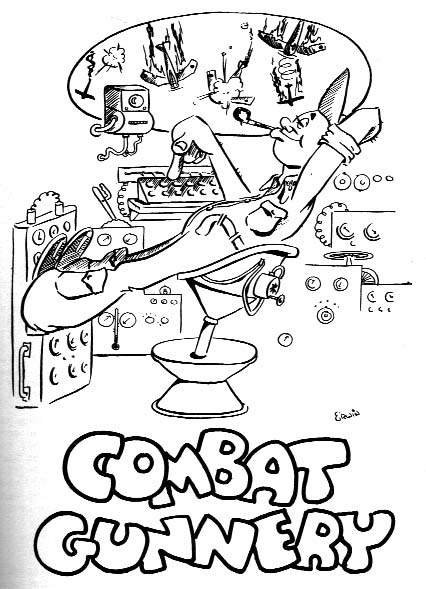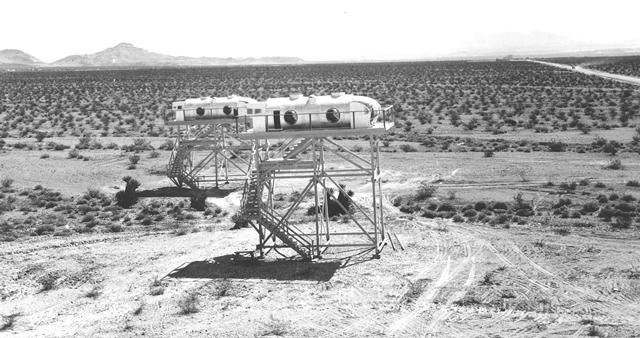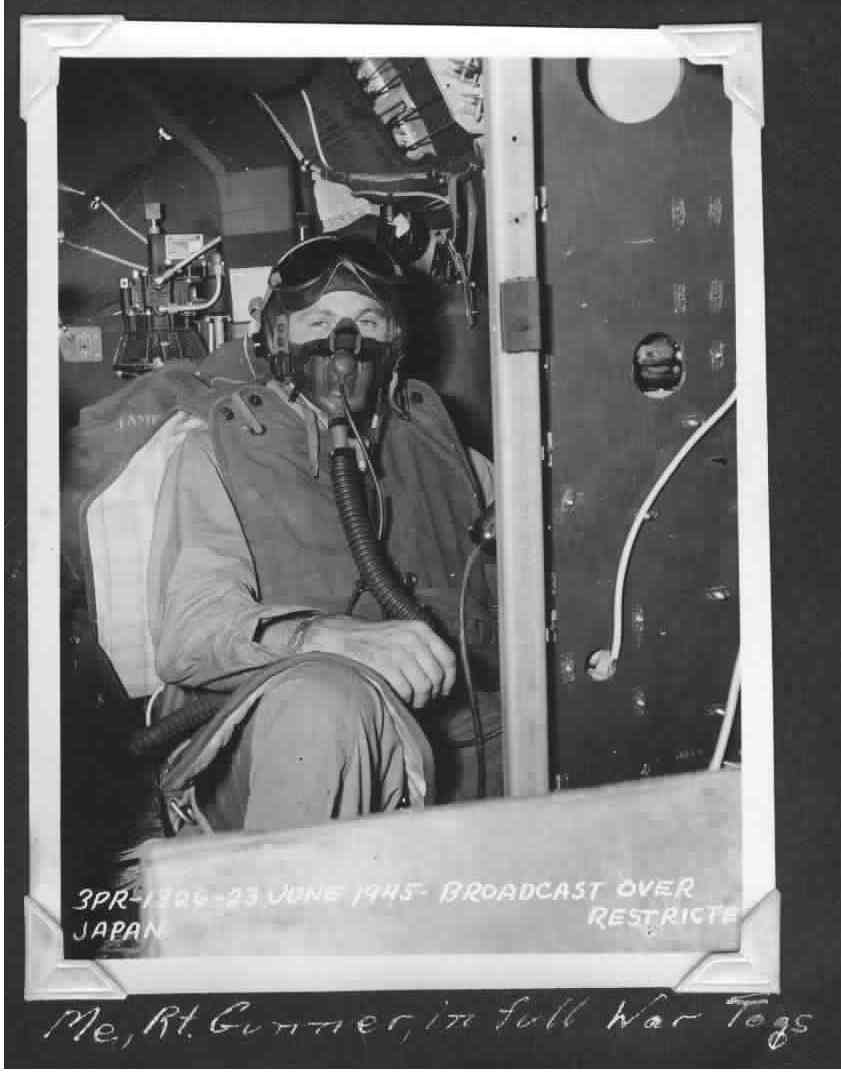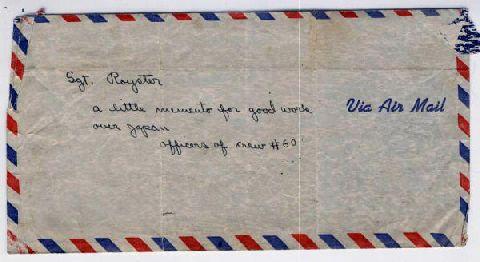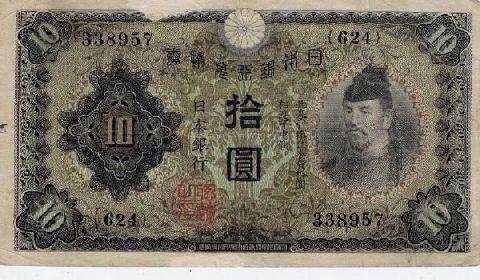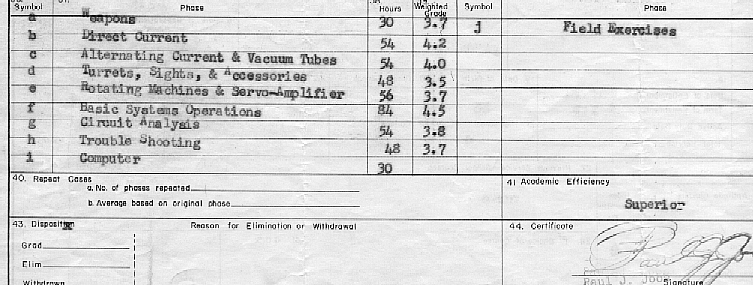Central Station Fire Control
The Remote Control Turret System (RCT) or Central Station Fire Control System was first used in the Boeing B-29 Superfortress. This system, which was developed by General Electric, was a very advanced weapon system for its day. Instead of the gunner being inside the turret, between the guns or at an open waist window in the 30 below zero wind, he was located inside the pressurized crew compartment. If the gunner was in a more comfortable heated environment, could wear fewer layers of clothes, wasn't restricted inside the turret it was reasoned that he would be less encumbered and less fatigued than his brother in the manned turret.
Here is the operational B-29 turret system that we have assembled here at the Stockton Field Aviation Museum, part of the Remote Control Turret System that was used in the Boeing B-29 Superfortress. This mockup is of the upper gunner or Central Fire Control (CFC) gunner. The sight is the ring type and under it is the pedestal seat or Barbers Chair as it was sometimes called. On the wall are many of the typical components of the RCT system. There are two Amplidyne motor generators, one Dynamotor, servo amplifier, Navigator's hand set and the control box. The missing component is the computer which is shown below.
This is just one of several systems that make the entire Central Station Fire Control system used in the B-29. This is the upper or ring sighting station and the upper aft two gun turret. We are looking for the other components to complete the B-29 system so if you know where we can find other components please contact me at taigh@twinbeech.com or you can call at the number below. We especially need Amplidyne motor generators, control or junction boxes, cannon plugs and technical manuals and information. Thanks in advance for your help.
There has been a lot of confusion about which gunners can control which turrets. These few charts from the Gunner's Information File should clear up that confusion.
Here are some hand notated memo section scans.
I'm not sure what these photos are but here you go:
Email Submissions
Frank Farrell
Bill Royster wrote: "I have heard much about our remote control turrets, and the supposition seems to be that they were next to worthless. Personally I can't say enough good things about them. They did the job when need. I used to do quite a bit of squirrel hunting as a youth. When I came home empty handed I didn't blame the shotgun. Personally, while flying 31 missions I never had any gun to fail, and if you knew the wing span of the fighter, and set your sight right, he was a dead pigeon. The Officers on our crew each gave 10 dollars, to be given to the first gunnerwho brings down a enemy. The attached envelope will show you who got the fifty dollar We had a fine gunnery system."
Bill is one of the poor abused gunners... Just kidding folks. Below are the photos he was referencing.
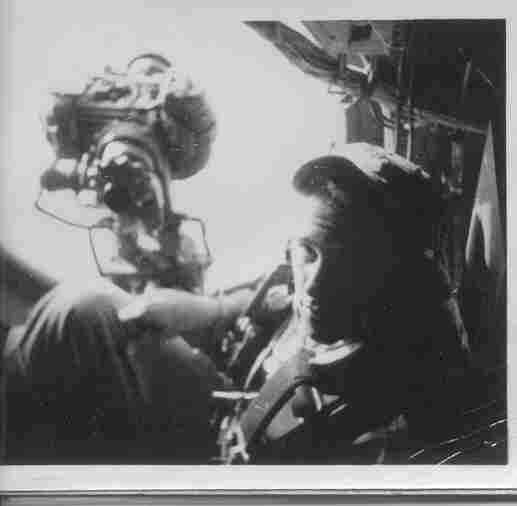
From Frank "Bud" Farrell:"When Lemay ordered all guns except in the tail removed during low level night time missions, our crew disobeyed the order and put 100 rounds in the lower aft turret, just in case. On two separate night missions the left gunner shot down a night fighter by sighting on the muzzle blast. We could not claim the kills in fear of Court Marshal. Another point for the accuracy of the CFC system in my book. I'm able to talk about it today. (11 lives spared at the time) This is just the highlights of the incident."
Frank (Bud) Farrell who was a Blister Gunner in the B-29 during the Korean War is seen here at his station. Thanks for the picture Bud! For more pictures of Bud and to find out how to get a copy of a book about his experiences as a gunner in the Korean war click here.
Here is Bud (standing on top of the fuselage) loading the guns of the upper forward turret of his B-29 No Sweat.
Here Bud is at his station at the left blister of the B-29. His pedestal gun sight has an AN-N6 gun camera (rectangular device in the upper left corner) mounted to it which tends to pitch the
sight over from the weight.
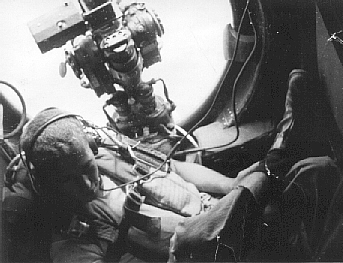
Here is Bud's certificate of graduation from a B-29, B-50 and B-26 turret system mechanics course at Lowry Air Force Base on September 15, 1951.
Neysa McNeley
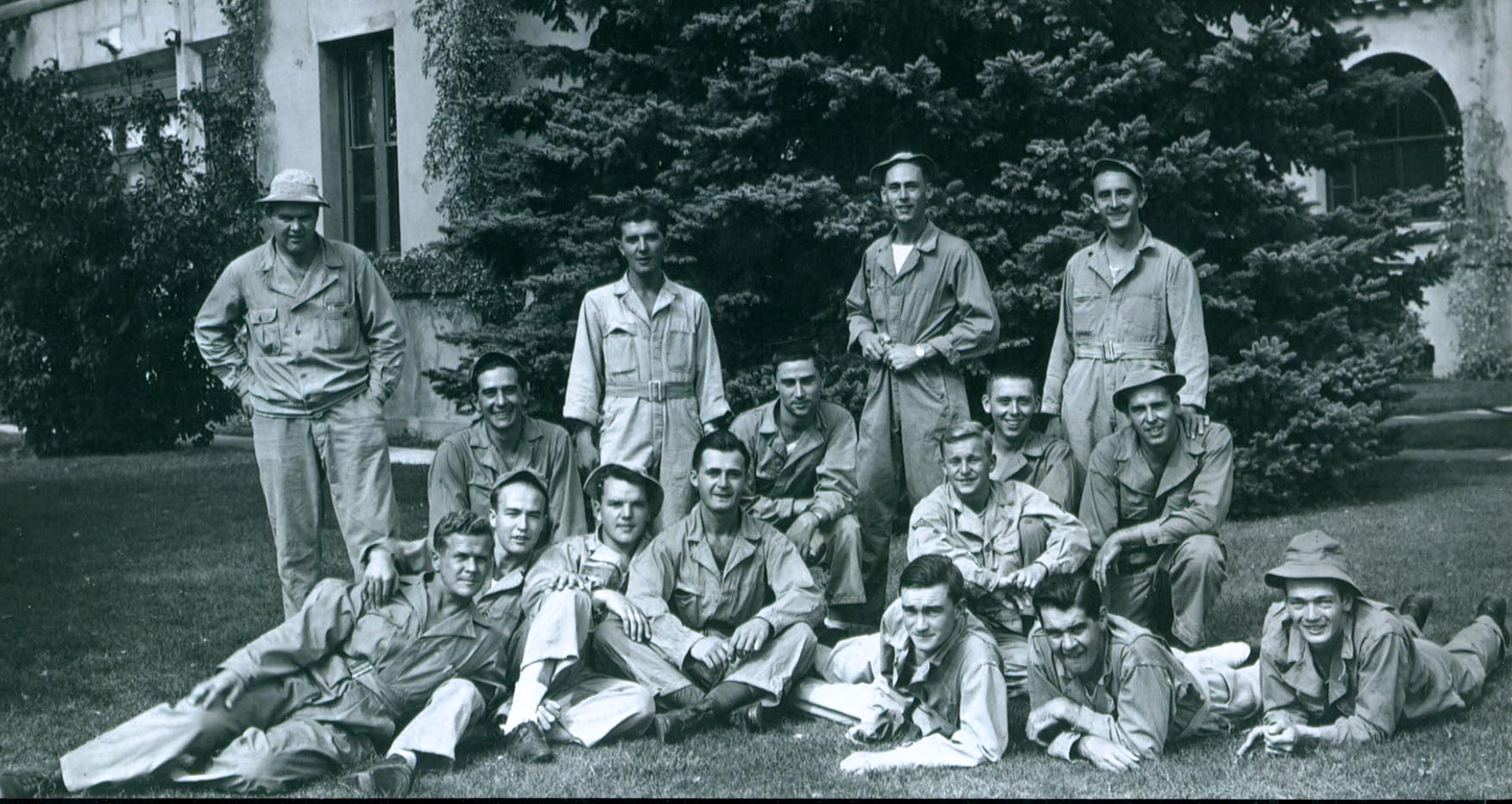
"Taigh: It took me ONLY a month to get this to you, which is almost prompt for me. My scanner was refusing to talk to my computer when your message came in requesting the CFC class photo (still not working)
and then I lost your message. Yesterday I was cleaning out my In-box and ran across your March 6 e-mail so I went out this morning and got Walgreen to copythe photo.I have reduced it from over a thousandKB to
something you might be able to handle, and it is attached. Let me know if you want a different size, orhave any problem.
I will list the names of the classmembers, as best I can read them. At leastone other member of the class, David's best buddy, Charles Trabold, used to be on this list. He and David were both assigned to the 58th
Wing, 462nd BG, but different Squadrons. I would be very interested in hearing from any others who might contact you.
The caption at the bottom of the photo (not scanned) was hand written: Lowry Field, C.F.C. Class. 7-43-B 9-15-43. I cannot vouch for the spelling of some of these names. They were hand written and some not
too legibly. I will send a copy of this e-mail to Trabold and if he gets it, he may be able to make corrections.
Standing: 1. Garrison Rice, West Hartford, Conn.; 2. Hugh Mauer, Norwood, Ohio: 3. Myron B. Leffingwell, Denver,Colo.; 4. Fred S. Lewenyuk, Springfield, Mass.
Kneeling: 1. Raleigh H. Fosbrink, Seymour, Ind.; 2. Bob Stahler, Philadelphia, Pa.; 3. David F. McNeley, Des Moines, Ia.; 4. Ernest Barthol, Bethlehem, Pa.
Sitting and laying down: 1. Henry S. Barkmann, Louisville, Ky.; 2. Charles Slapak, Cicero, Ill; 3. Charles O. Trabold, Rochester, New York; 4. Lazlo K. Varga, New York, N.Y.; 5. Richard C. Davis, Long Island, N.Y.;
6.Kenneth Bartz, Harrisburg, Pa.; 7. Frank J. Wynn, Rochester, N.Y.; 8. Benjamin Ridgeway, Oklahoma"
Oliver Tybras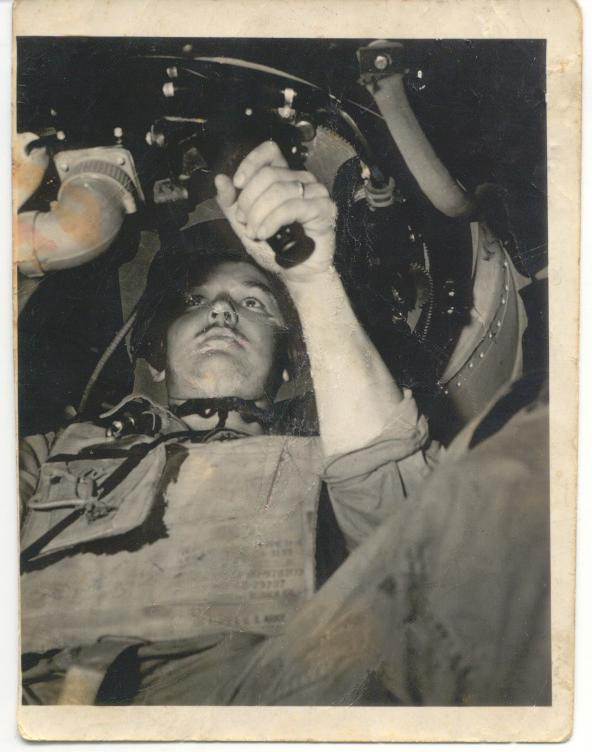
Here is a shot of Sergeant First Class F. Jack Stevens CFC gunner in his position in the barbers chair. Jack was in the 883rd bomb squadron and flew in Z square 51. I want to thank his son Wally for sharing this photo with us. I also want to thank Olivier Tyrbas who took the posted photo and corrected the cracks, folds and blemishes to give you the clear image that you see above. Thanks Olivier for taking the time to fix this for us. The internet is a wonderful place simply because it is made up of great people, like Olivier, around the world who are generous to share their information, time and talents.
Ron Johnson, S/SGT
"Taigh, I told you about 3 years ago I would send you my records from my time in the Air Force. At Lowry RCT, and Gunnery training schools. Randolph B-29 crew training (I was there twice
once in 1951 and an other in 1953) and did time at Barksdale 8/1951 to 6/1953 in the 376th Bomb wing 514 Squadron, where we were trained to load, carry, and drop "A" bombs, very secret. In June of 1953
that duty was turned over to the new B-47. No gunners needed so we sent back to Randolph for an other B-29 crew pick up. After the 20 week course the new crew was sent to Forbes AFB to get ready to be sent to FEAF.
But with it over in Korea we gunners were surplus. I was offered B-36 tail gunner or KC-97 boom operator, but I chose early out and was discharged. Went to work at Northwestern Bell Telephone next 35 years and now
on 26th year of retirement.
P.S. I thought I had better get this done as I now am 81 years old and had to get a heart pacemaker on last July 1st when my pulse went down to 20 bps. I was in the MN Nat'l Guard 1st so that is why my serial
number begins with a #2. An old B-29RCT and Tail Gunner."
Thanks for sending in the information Ron and thank you for your service.
Mickey Gotlin
I was a B-29 gunner in WWII. I was trained in Laredo, TX, and was assigned to Pytoe, TX. For a crew assignment, they made me a central fire control instructor. In 1945, I was sent to Venlo Holland because they had a new two engine bomber called an A-26 to replace the B-26 short range bomber. It had the same central fire control as the B-29. My question is, is anybody out there who remembers any of this? I would like to hear from them. - Mickey Gotlin, email sheil66@aol.com.
Chip Marshall
"I read with great interest all of the information you have placed on the web about the B-29 gunnery system. My interest, however, is more nautical than aerial.
In 1946, PT-620, one of the few remaining World War Two PT boats was fitted with an experimental weapons system at the New York Navy Yard in Brooklyn, NY. All existing manually trained and fired gun
weapons were removed and the aft starboard torpedo launching rack was removed to make room for the “brains” of the system in a weather proof metal case. Aft, the manual 40mm Bofors was replaced with a
electrically operated version. I am guessing and have no knowledge that the ammunition was manually loaded from a ready storage rack just forward. The aft 50 caliber turret was replaced with a four 50
caliber B-29 gun turret. On the foredeck, the 20mm cannon location just forward of the bridge was used for the installation of a second B-29 gun turret up on a stand. All weapons were controlled from a station
installed in the forward 50 caliber turret to the starboard side of the bridge. Testing took place at a live fire range in the New York area and the live fire range off of Patuxent River Naval Air Station in the
Chesapeake Bay.
Apparently there was some success realized with this installation. One of the 1947-48 concept designs of Electric Boat’s PT-809 includes four B-29 gun turrets.
During World War Two a limited number of PT boats were fitted a manually operated mount with four 50 caliber guns. And in the Korean War, the 85 foot rescue boats operating in theater were fitted with the Army’s
quad 50 caliber on the foredeck.
If anyone out there has any information on the B-29 gunnery system installed on the PT boat or anything else floating I’d sure like to hear about it. I can be contacted at
bgmarshall@aol.com or 301/642-9410. Regards, Chip Marshall; Silver Spring, Maryland"

